Create Excel and PDF documents from Cognito Forms in Zapier
This article shows how to create PDF documents from an XLSX template on a Cognito Form entry with the help of Processes in Zapier. It may help you to automate the generation of different documents like applications, requests, orders, etc., in your company.
Processes are a Plumsail Documents feature with an intuitive interface for creating documents from templates.
Cognito Forms are an online form builder that allows you to create powerful forms for your website.
In this example, we will collect data from a Cognito Form, apply the data to our Excel template, and generate a new PDF document with the help of Processes in Zapier.
Create a Form
We have already prepared a Cognito form for ordering stationery and office supplies. We will use data from its submission to apply to our template. If you haven’t created any Cognito Forms before, you can learn how to do it.
Below is a screenshot of our form:
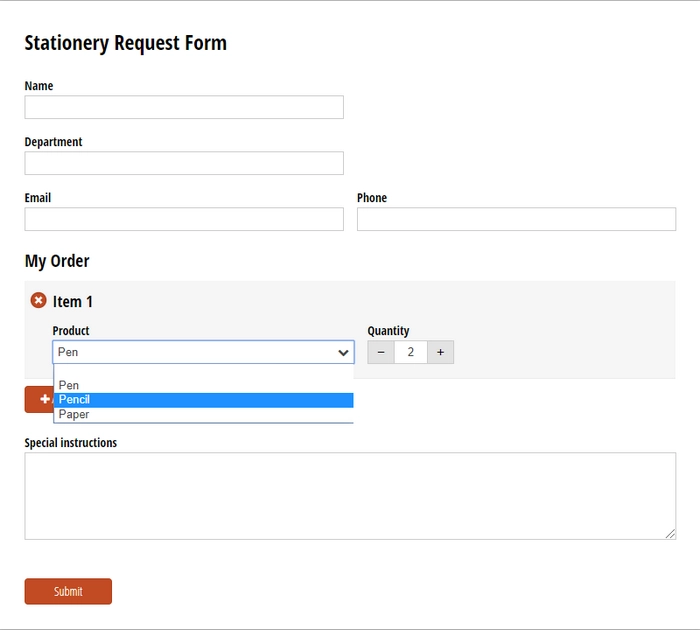
We used the Repeating Section layout to allow users to add more products. You may also use the Basic Sales Form template to add this functionality:
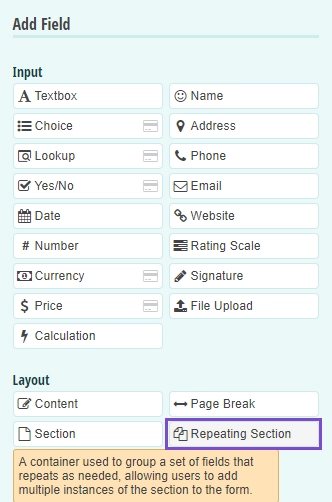
Configure the Process
Now we need to create and configure the Process which will generate stationery requests in PDF format based on data from our web form submission.
Create a new Process
Go to the Processes section in your Plumsail account.
Click on the Add process button.

Set the Process name. As we’re going to generate PDF stationery orders from an Excel template, select XLSX for the template type.
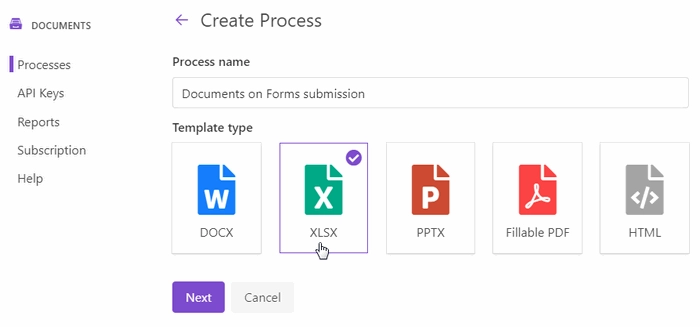
Configure a template
Once you’re done with the first step Create Process, press the Next button, and you’ll proceed to the next step – Configure Template.
It includes two substeps:
Editor;
Settings.
In Editor, you can compose the template from scratch or upload a pre-made one. It’s also possible to modify the uploaded template online.
Feel free to download an XLSX stationery order template that we have already prepared:
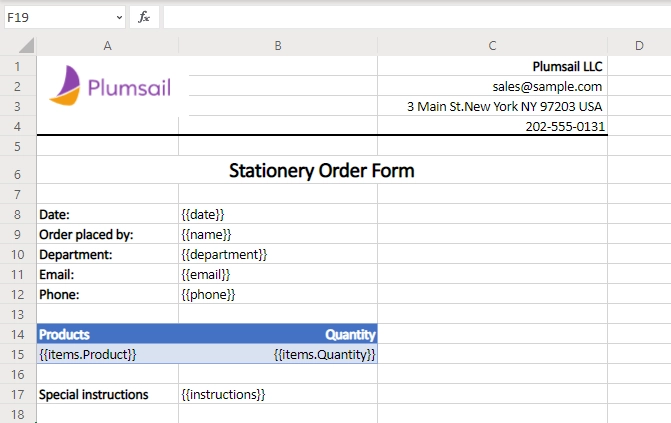
Then upload it to the process.
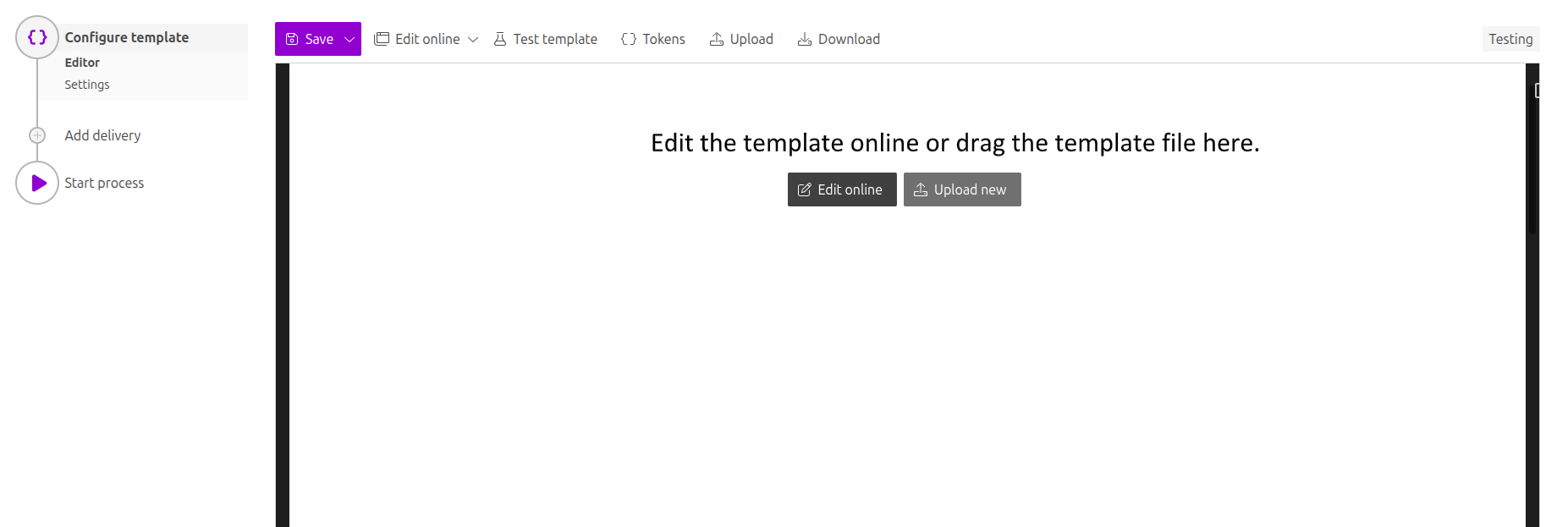
Templating syntax
When creating your own templates, mind the templating language. Plumsail Excel XLSX templates use a different approach than most other templating solutions. It uses a minimal amount of syntax to make your work done.
In short, the templating engine thinks that everything between curly {{ }} brackets is variables where it will apply your specified data.
Read this article to get familiar with the templating engine.
Test template
To check how the document will look at the end, click on the Test template button.
You will see the dialog where you can fill in the auto-generated testing form. Form fields are created based on tokens from your document template. You can adjust the look of the testing form by changing token types.

It’s testing. We’re going to apply the data from the web form to our template.
Once you’ve tested the template, press Save&Next to proceed further - to the Settings substep.
Here, please:
Switch to an active mode to remove Plumsail watermarks from resulting documents
Fill in the name of the result file
Select PDF format for the output file
Protect the result PDF if you wish
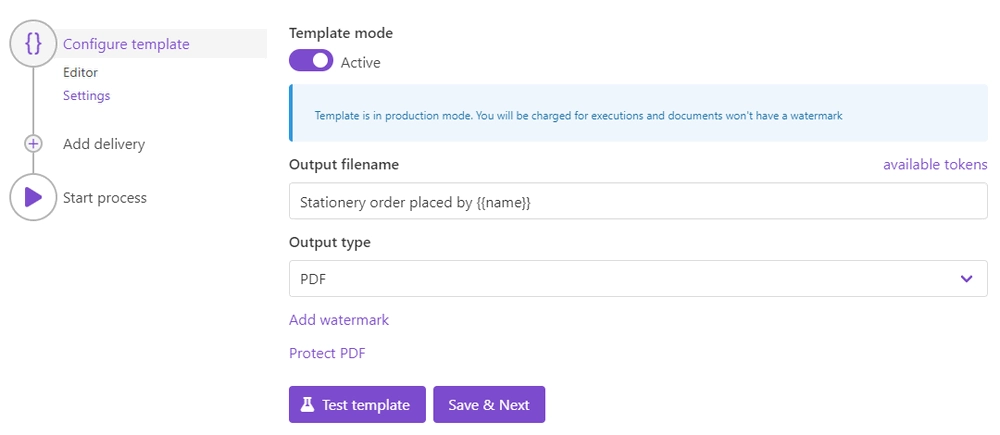
Once you’ve customized all the settings, you can test the template to see the result as we did it before.
When everything is done here, click on Save & Next to set up deliveries.
Delivery
The next step is delivery. For demonstrating purpose, we’ll store the result file in OneDrive. But there are other options.
Just set the folder’s name where the ready document will be saved.

You can configure as many deliveries as you need.
Start the Process
We will start our Process from Zapier.
Create a Zap
Zap is an automated connection between web services in Zapier. You can create it from scratch following the steps explained below.
Or you can utilize the zap template. Click Use this zap, and then just customize the steps as it’s described further in this article.
This is how our Zap looks:

Below is a step-by-step description.
New entry in Cognito Forms
We need to start the Zap every time somebody submits our stationery request form. For that, search for Cognito Forms in Zapier and add New entry as a trigger.
If this is your first Zap with Cognito Forms, on this step, sign in to your Cognito Account from Zapier to use your forms inside Zaps.
Then, you’ll need to pick the form you want to track in the dropdown.
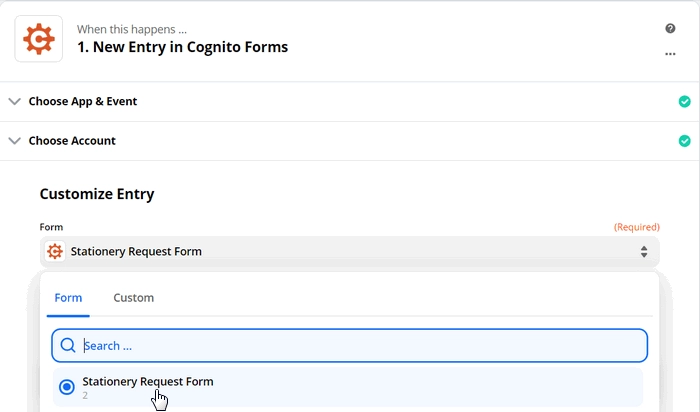
The last thing to do with the trigger - Find data. Press “Test trigger” to find data. It will allow you to use the trigger output on the next step.
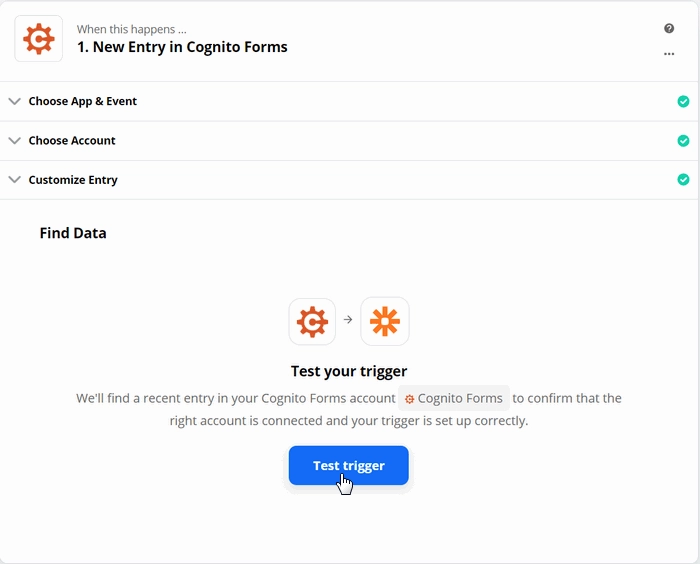
Start process in Plumsail Documents
Once the trigger is set, search for Plumsail Documents and add an action Start process.
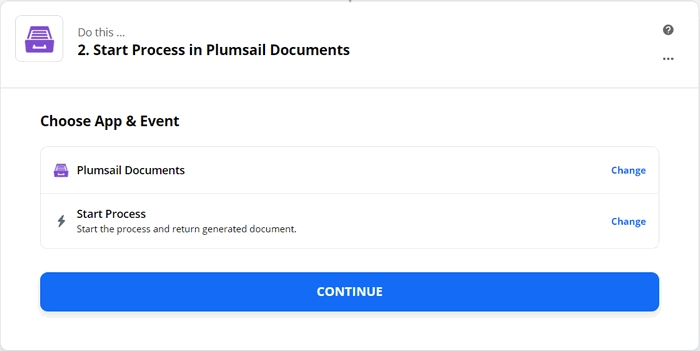
Click Continue. If this is your first Zap, at this point, you’ll need to Sign in to your Plumsail Account from Zapier to establish a connection between the app and your account. If you already have a Plumsail account tied to the app, you can add another one at this step, and use it instead.
Customize Start Process
Choose the process you want to start by this Zap from the dropdown.
You will see fields to complete - they have the same names as tokens from the template.
To complete them, use the output from the Cognito Forms trigger. Zapier outlines nested objects and arrays. In our case, it’s a collection of items.
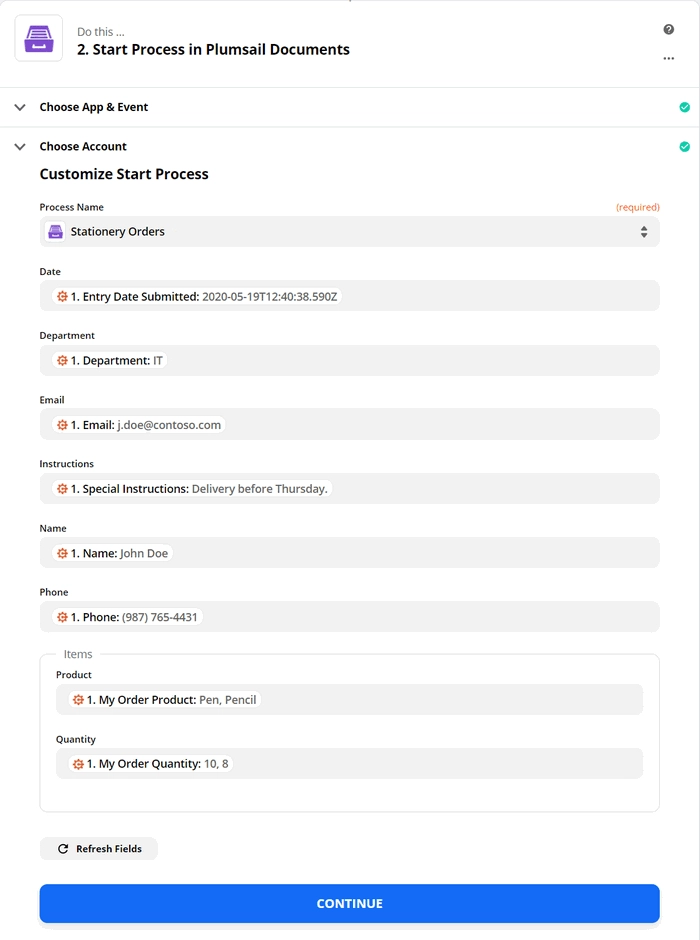
That’s it! Our Zap is ready🎉 See how the resulting file looks:
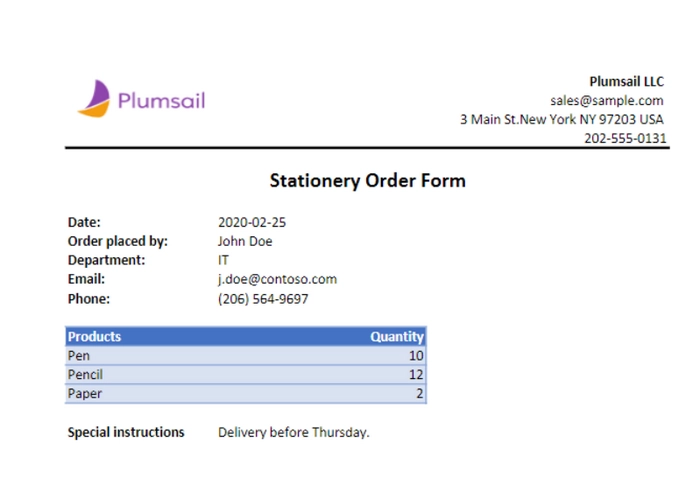
Sign up for Plumsail Documents
As you can see, it’s simple to automize the generation of documents on Cognito Forms submission. If you’re new to Plumsail Documents, register an account and follow the steps described in the article to set the process for automatic creation of PDFs from Cognito Forms.